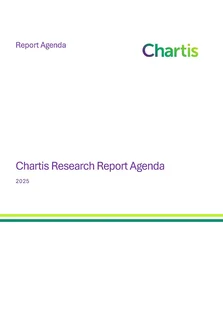<p>Model risk is the sleeping giant of risk management. Everyone knows that the risk, pricing, and performance models that financial institutions rely on can fall prey to errors. All models can only be mathematical approximations of reality and therefore have only limited accuracy and reliability.</p>
<p>Although this is a well-recognized fact, model risk management has not been a major risk management discipline until recently. The sense of complacency that led to an over-reliance on models in the run-up to the financial crisis has begun to dissipate. As a result, firms are now looking for systems to manage the risks associated with their models.</p>
<p>Increased regulatory requirements: Multiple regulators are making model risk management mandatory, including requirements under Solvency II, Basel 3, and Dodd-Frank. Additionally, regulators, including the OCC, Federal Reserve, and PRA are requiring firms to demonstrate evidence of controls and governance for models.</p>
<p>Stakeholder pressure: Shareholders and other stakeholders are demanding improved model risk management in response to losses caused by inaccurate or misused models. In particular, they are pressuring boards and senior management to take an increased role in model risk management.</p>
<p>Internal credibility: Errors in models are causing users to doubt their effectiveness and are creating a drive for improved model risk management within financial institutions.</p>
<p>Senior management involvement: Model risk management has not previously been seen as a strategic priority and has been implemented disparately with little or no aggregation. Senior management members need to lead<br />
enterprise-wide model risk management.</p>
<p>Mix of quantitative and qualitative risk management needed: Model risk management is difficult because it requires a mixture of quantitative (e.g. validation and testing) and qualitative measures (e.g. model use policies), which must be used in combination with one another.</p>
<p>End-to-end model risk management: To be effective, model risk management must encompass the full model development lifecycle and the full risk management lifecycle, from risk identification to risk assessment.</p>
<p>This report covers these trends in depth and provides a picture of the competitive landscape for model risk management solutions. This report uses Chartis’s RiskTech Quadrant® to explain the structure of the market. The RiskTech Quadrant<sup>®</sup> uses a comprehensive methodology of in-depth independent research and a clear scoring system to explain which technology solutions meet an organization’s needs.</p>
<p>This report covers some of the leading vendors offering model risk management solutions, including ClusterSeven, Empowered Systems, FICO, FINCAD, IBM, Numerix, Oracle, and SAS.</p>
Only users who have a paid subscription or are part of a corporate subscription are able to print or copy content.
To access these options, along with all other subscription benefits, please contact info@risk.net or view our subscription options here: http://subscriptions.risk.net/subscribe
You are currently unable to print this content. Please contact info@chartis-research.com to find out more.
You are currently unable to copy this content. Please contact info@chartis-research.com to find out more.
Copyright Infopro Digital Limited. All rights reserved.
As outlined in our terms and conditions, https://www.infopro-digital.com/terms-and-conditions/subscriptions/ (point 2.4), printing is limited to a single copy.
If you would like to purchase additional rights please email info@chartis-research.com
Copyright Infopro Digital Limited. All rights reserved.
You may share this content using our article tools. As outlined in our terms and conditions, https://www.infopro-digital.com/terms-and-conditions/subscriptions/ (clause 2.4), an Authorised User may only make one copy of the materials for their own personal use. You must also comply with the restrictions in clause 2.5.
If you would like to purchase additional rights please email info@chartis-research.com


